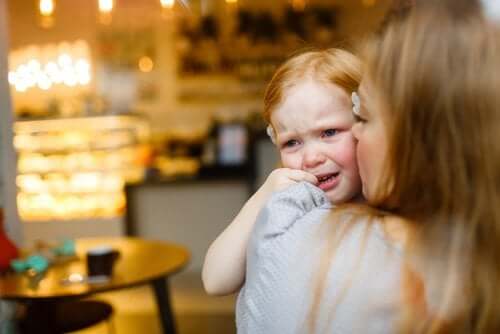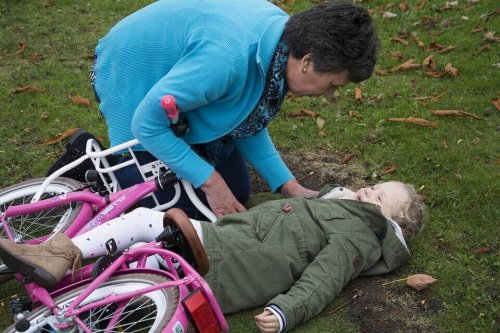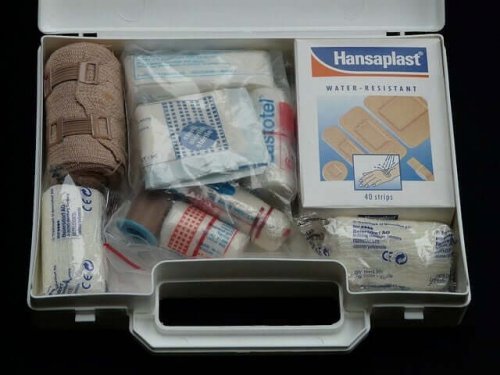Practicing Pediatric First Aid: Parenting Tips

One of the most important things you can do as a new parent is to learn basic pediatric first aid.
Most of the time, kids are off in their fantasy world and they aren’t paying attention to the things around that could hurt them. Their games could be cut short by a fall or a cut, and the situation can derail quickly.
Knowing how to use the proper first aid with children will help things stay on track and end in the best way possible. In other words, you can still have a happy ending after an accident.
If your child has an accident, it’s important to stay calm, think clearly, and act quickly and intelligently.
How to administer pediatric first aid
Among the most common accidents kids have are bumps, falls, fractures, drowning, cuts and scrapes, burns, and insect or animal bites. Any of these can become more serious if you don’t take the proper steps on time.
Bumps and bruises
These are very common childhood injuries, and usually not very serious. That being said, it’s a good idea to keep an eye on the affected area for about 24 hours and apply ice and an anti-inflammatory ointment to reduce swelling.

Falls: pediatric first aid
Falls are your children’s greatest enemy. If your child falls, the first step is to calm him or her down and apply some ice to the site of the injury. If there are no open wounds, apply an antiseptic and cover the area.
Broken bones
If you think your child might have a broken bone, there are a few things you should look for. If you notice little to no mobility, swelling, and that the area is painful to the touch, you’re probably dealing with a broken bone. You should act quickly and calmly. Immediately apply ice to help reduce swelling and pain.
It’s important to immobilize the injured area. You don’t need any fancy equipment, just use what you have on hand. Sturdy sticks or a rolled-up magazine and some pieces of cloth will work just fine. Take your child to the doctor as soon as possible.
Drowning
If you’re at a water park or a pool and your child falls in, you have to act as quickly as possible. Remove the child from the water immediately and lay her on her back to open her airways and allow oxygen to circulate.
When the child has calmed down, slowly sit her up and dry her clothes. That’ll help the child feel safe and peaceful and her heart rate will go back to normal.
Choking
If your child is choking, lay him over your knees, face down, and give him firm blows to the back until the blockage has cleared.
Cuts
Kids can get cut in nearly any situation. While cuts often aren’t serious, the sight of blood can scare the child.
If your child gets a cut, first rinse the wound generously with clean water to avoid infection. If the bleeding doesn’t stop, wash it again with plenty of water. Carefully, and without touching the cut, dry the skin and cover it with a dry cloth.
Burns
Treating burns should be done quickly and very carefully. The first thing you should do is submerge the injured area in cold water for at least 5 minutes. The worse the burn, the longer you should leave it in the water. You can put it in a container with water, but running water is best. Don’t put pressure on the skin.
Experts don’t recommend putting any kind of ointment on the wound without consulting a doctor. Instead, cover the affected area with a clean, damp cloth, and get to the nearest hospital.

Animal and insect bites
The first thing to do for an insect bite is to check if there is a stinger still in the bite. If so, remove it with tweezers. Then, wash the bite well. If your child has swelling and fever, call a doctor as soon as possible.
If an animal bites your child, clean the wound with plenty of water and put pressure on it for about 5 minutes. Lastly, dry it with a clean towel.
It’s extremely important to identify the animal that bit your child. Depending on what it was, your child might need a vaccine or, in the case of a poisonous snake, an antivenom.
Pediatric first aid kit
It’s important to always carry a first aid kit, especially if you’re going to be spending time outdoors. Your first aid kit should contain the following:
- Gauze.
- Cotton balls.
- Bandages.
- A thermometer.
- Hydrogen peroxide.
- A topical anti-inflammatory.
- Bandaids for superficial cuts.
If you have to give pediatric first aid, your goal is to treat the injury as quickly as possible. Equally important is staying calm and making your child feel safe and loved to help him or her get through this frightening experience.